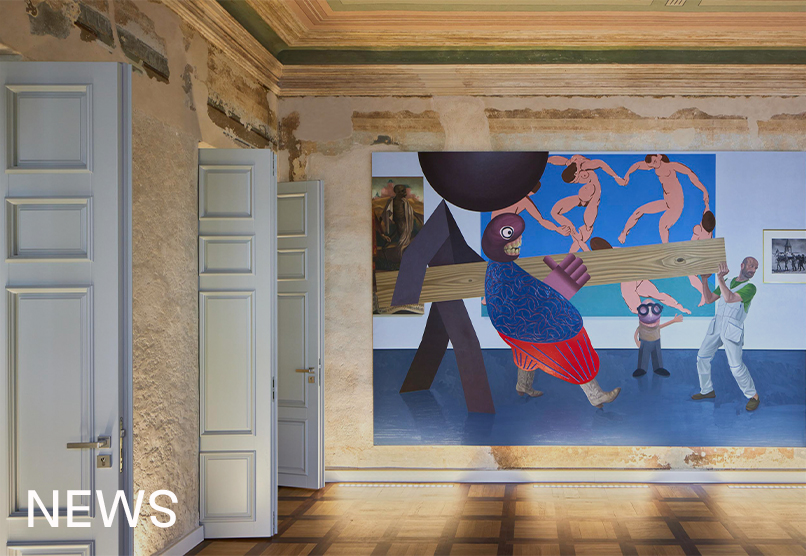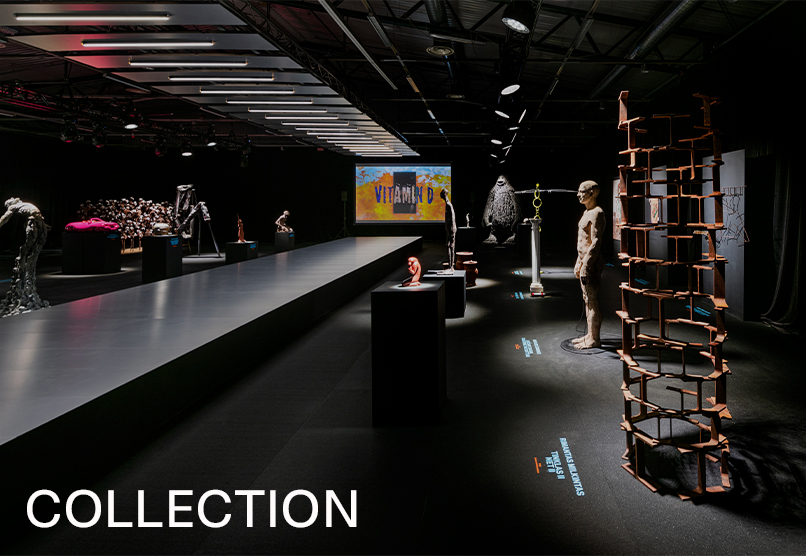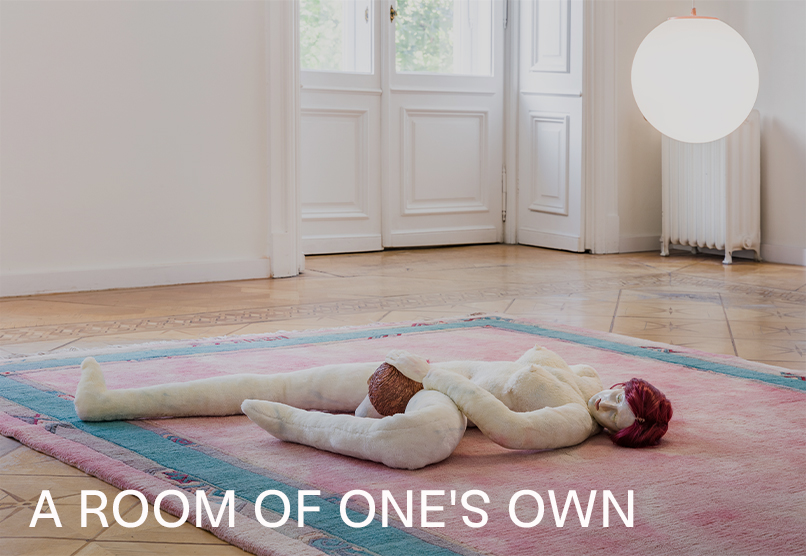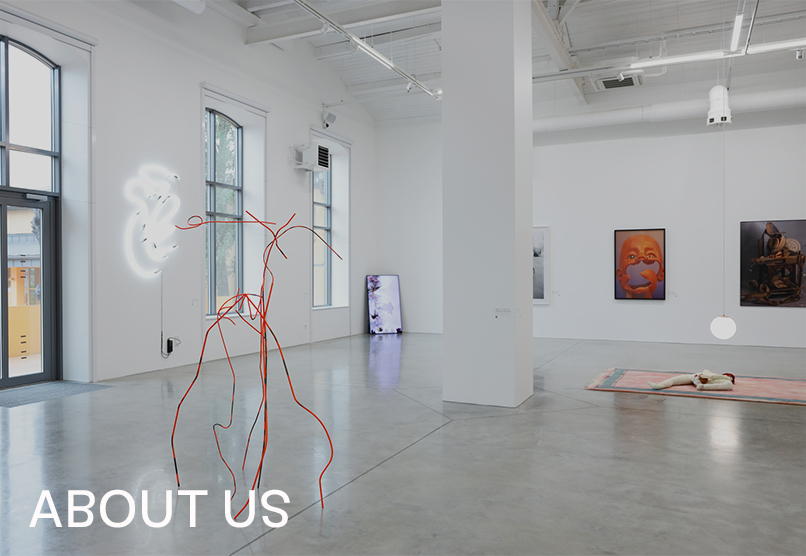News
2023-04-12
The exhibition "Climax" by Kazimieras Brazdžiūnas at the Lewben Art Foundation
The Rooster Gallery together with the Lewben Art Foundation invites you to the exhibitions “Climax” and “The Lamb” by painter Kazimieras Brazdžiūnas. The exhibition diptych will be displayed at two venues: exhibition “The Lamb” – at the Rooster Gallery (12 Šv. Brunono Bonifaco St.), exhibition “Climax” – at the Lewben Art Foundation (6-12 Bernardinų St.)
The opening event will take place on April 14, 6 PM, at the Lewben Art Foundation, featuring Dj's Eivydas K and Cyber.
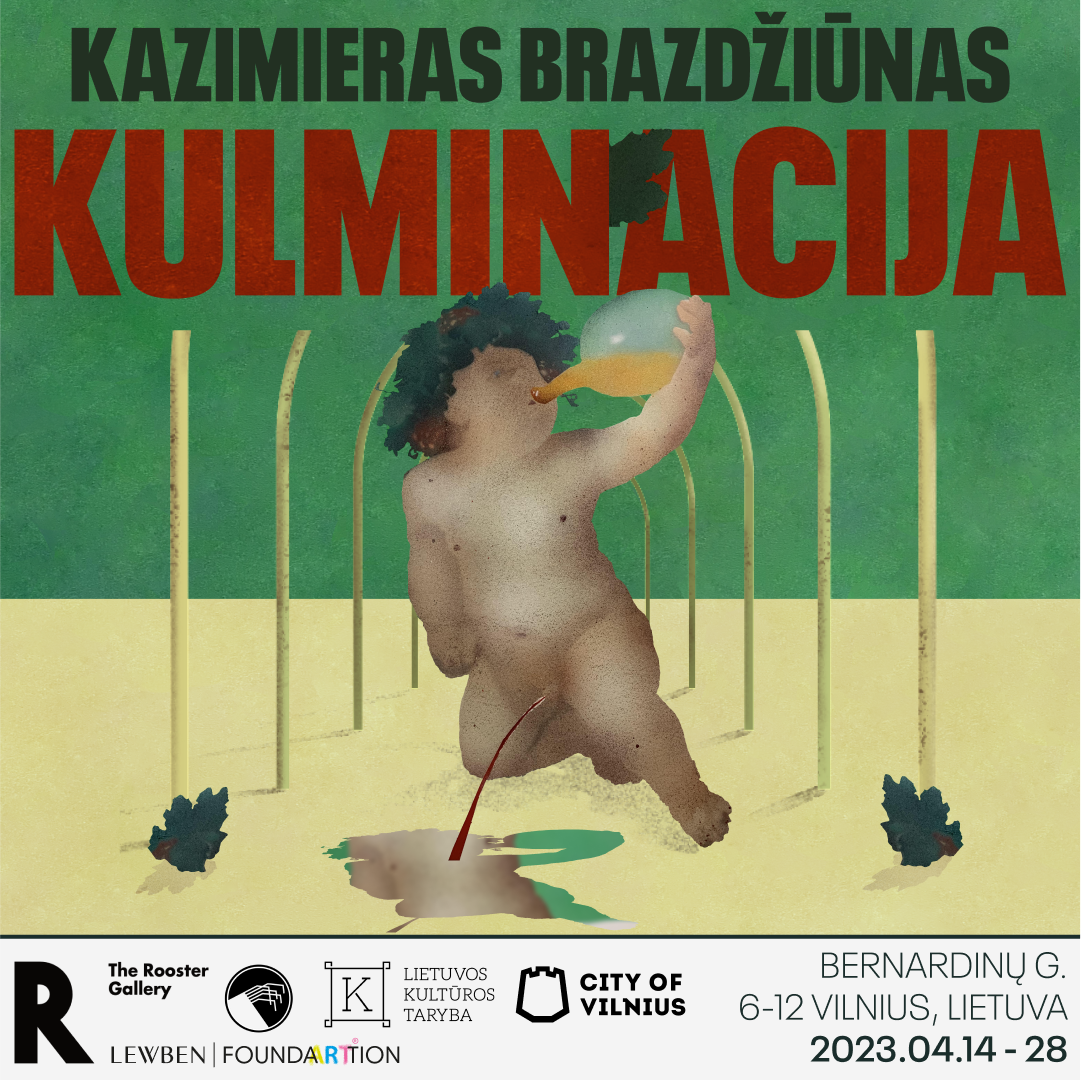
Kazimieras Brazdžiūnas' exhibition "The Lamb" is based on the conceptual axis of one painting - “M.R agnus dei", which now belongs to the MO collection. We won’t find the work itself in the exhibition, but we will find plenty of images and echoes testifying to its presence.
The life of the painting as a physical object, and its travels through the cultural world in various forms, seem to confirm the primacy of virtual representation over the body. The Lamb of God is a Christian image reproduced countless times in various media, a global icon that has lost its aura. The worn-out image does not even raise the question as to why it is or what kind of victim the exhibition is talking about since the first impression seems to say that it was chosen precisely because of its exhaustion of its meaning - as another ridiculously emptied symbol in the post-Christian, digitized being. On the other hand, you involuntarily begin to consider, that perhaps the lost symbolic weight of the icon is the victim in this situation. As if the body and blood of Christ are wasted and dissipated beyond compare.
Exhibition “The Lamb” will run parallel the exhibition "Climax" (Lewben Art Foundation), where you can view the painter's recent works.
You’d like to think that there is something more in these works of art, something above reality, you’d love to romanticize them, but in reality it is a challenge. For the audience, it bears imagination, beauty, and a sort of enchantment. For the artist, it is a test, an overcoming, and a study.
The works of the painters cited in the canvases were followed by long studies - of models, composition, accompanying symbols, and narratives. A long road and all kinds of hard work on the way to the result - the climax of it. But what we see in front of us in the exhibition is the manipulation of this long, hard work.
In some places, the old masters and classics are replaced by contemporary images, rapidly changing, not nonfading, but instead flashing icons. Its culminating, critical, tension point is replaced by sensation. So much for that - let's say it's a climax that ends in a matter of seconds because it's replaced by another one, essentially dissolving the resolution of what should be the real culmination.
We return to someone who not only creates/manipulates large canvases through physical withdrawal, he also creates with detachment from the subject. Precisely prepared canvases, characters that seem to be cut out with a scalpel, create another level of aesthetic and symbolic sterility. Perhaps this deception, which forces the viewer's imagination to wander through dream-like states and narratives or through recognizable iconic images, also deceives the painter himself. Finally, he becomes the bare one, trying to distance himself by all possible means, to cleanse his work of himself. Trying to simply choose a task. The idea that an artist suffers in order to create beauty seems incongruous in this case, but these two paths collide in a particular way.
And even the butterfly that has landed on a character’s nose becomes simply a solution, not a sign. The piece is solved, the climax is reached, and it's time to move on to the next one. Faster than before, while committing betrayal of itself through the act of choice. Solving other tasks, which only the viewer will fit into the framework of his or hers fantasy, while the artist will go in search of other problems, other ways, as if trying to clean up, to solve everyday life problems like an equation. Only one thing goes missing - patience, and the climax without it - just a sensational scream from the stage.
Kazimieras Brazdžiūnas (b. 1991, Kaunas) – painter, curator who, in his work, usually uses quotes and rethinks other artists, contemporary culture and symbols, doing so by using spray paint. In 2018 the artist received a master's degree in painting at the Vilnius Academy of Arts. Since 2012 the artist curates and participates in group exhibitions and art projects. His work has been exhibited in more than thirty exhibitions in such galleries as "The Rooster Gallery", "Vartai", "Pamėnkalnis gallery", "Meno parkas" and elsewhere. In 2018 he founded the art platform of young Lithuanian painters "Counter-Argument". In 2021 Brazdžiūnas won the special mention of the Young Painter’s Prize. The artist's works have been acquired by Lewben Art Foundation, MO Museum, and other private collectors.
Text: Emilija Vanagaitė, Artūras Mitinas
Design: Rytis Jonikas, Laurynas Vaitkus
The project is kindly supported by Lithuanian Council for Culture and Vilnius City Municipality.
The exhibitions will run until 30 April.
The opening hours of both galleries are: IV–VI 4 PM– 7 PM, VII 2 PM – 5 PM
